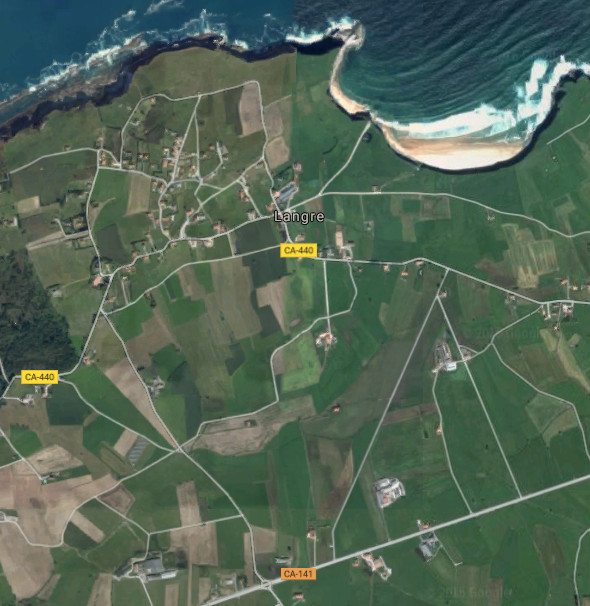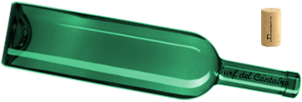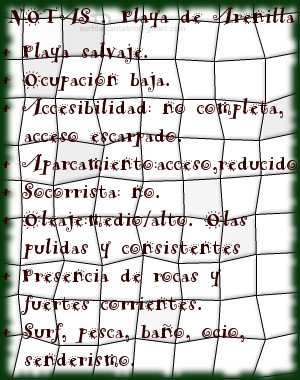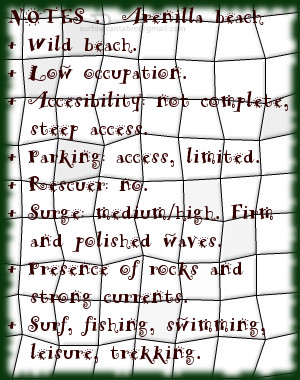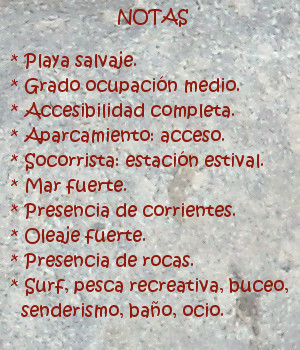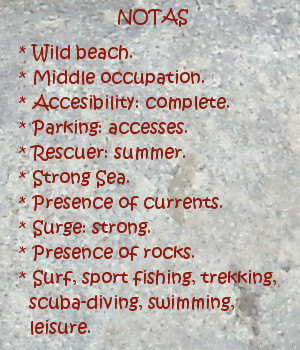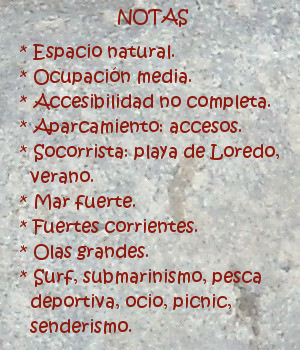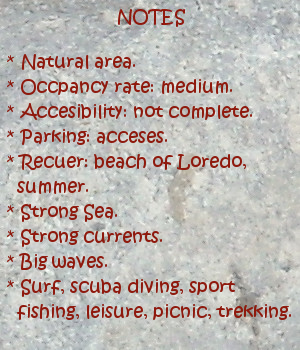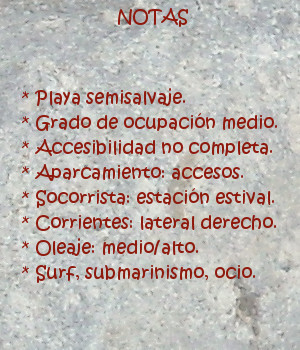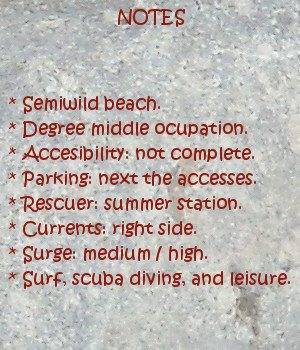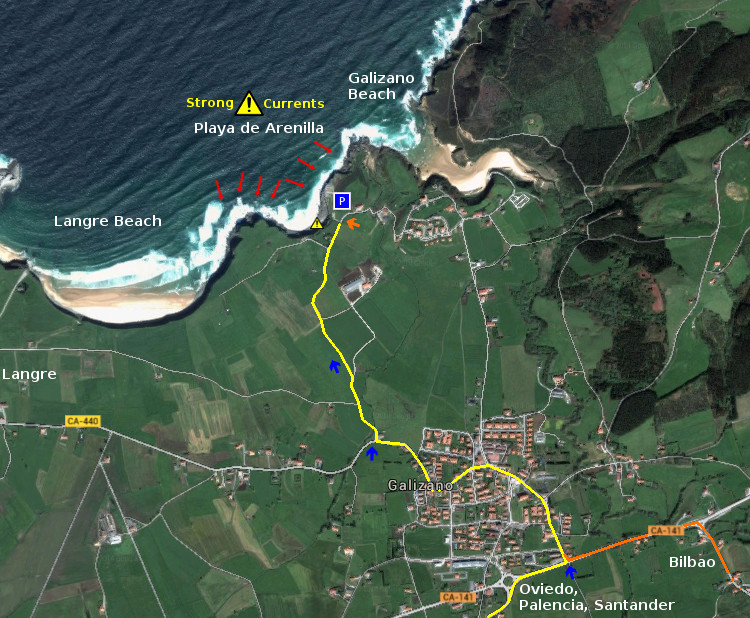 Algún tiempo después, regrese a la zona de confort; para descansar. La marea había subido ligeramente y el mar aumentó su tamaño, consumiendo las energías a mayor velocidad. La ocupación de gran parte de la playa de Langre por el mar prolongaba el recorrido de la olas e hizo aparecer nuevos trazados.
Algún tiempo después, regrese a la zona de confort; para descansar. La marea había subido ligeramente y el mar aumentó su tamaño, consumiendo las energías a mayor velocidad. La ocupación de gran parte de la playa de Langre por el mar prolongaba el recorrido de la olas e hizo aparecer nuevos trazados.
Próximo al centro de la playa, comenzando por el lado más cercano al acceso, nacía una ola de tamaño medio. Metro a metro, sobre el fondo arenoso, elevaba su altura; desplazando la figura hacia el lado opuesto. Otro colega, ya dispuesto en aquel punto, comenzó a remar con la llegada de una nueva serie. Cuando lo alcanzó la primer ola, superaba los dos metros. Dejó su tabla caer hasta la base, para girar y correr paralelo a la pared. Avanzó unos metros, mientras la altura del agua continuaba creciendo. La velocidad de su tabla le permitió superar la rotura, para finalizar en un claro que se abrió ante él. Otros surfers se acercaron a la zona. Guíe mi tabla hacia allí . Con ritmo pausado, pude contemplar como surfeaban. Por turnos, trazaban maniobras sobre el agua. Apuraban el camino, evitando el cierre en bloque con el que terminaba la ola.
La corriente me desplazó unas decenas de metros hacia a la orilla. Posicionado de forma oblicua respecto al camino de la ola, obtuve por azar una mejor perspectiva del recorrido. El volumen de agua que se repetía, sobrepasaba el metro y medio de altura. Continuaba su marcha, sin abrir sus posibilidades. En el otro extremo las condiciones eran más favorables. Seguía el mar en aquella zona, el dibujo curvo de la playa. Esto provocaba que la ola mostrará un rizo que se prolongaba más allá. El bloque de agua, que se desplomaba delante de mí, ocultaba los detalles que sucedían a lo lejos. Acerque mi tabla a una posición interior. Una nueva ola apareció a cincuenta metros. Remando lateralmente, me elevó, giré con rapidez para no ser arroyado. Cortando el agua en su mitad, obtuve un trazado limpio. Remontando a la cima, choque contra la cresta, recorriendo el camino inverso. Salí propulsado delante de la espuma, producida por la caía en barra del mazacote que se había formado. Buceé profundamente esquivando el remanente de energía. Atrás quedó la tabla, que tiró con violencia del tobillo, con la llegada de la viva espuma.
Dispuesto a evitar olas no practicables, fui avanzando en dirección al acantilado cercano a Galizano. Un grupo de iniciantes, acompañados por un monitor, trataba de superar la barrera que se formaba en la orilla. Ninguno de nosotros conseguía progresar. Esperé a que las olas me devolvieran a la playa. Desde la arena, caminé con la tabla recogida. Dejando atrás la zona central, encontré una puerta cómoda. Entré hasta ciento cincuenta metros. En el lateral del bloque central, aparecía un rizo. Aterrizando suavemente sobre el agua, después de un recorrido estable.
La playa se había vaciado parcialmente. En la nueva zona, la visión panorámica del entorno animaba a quedarse en el agua. Desde allí, las aventuras de otros colegas se iban sucediendo. El intento por surfear la activa e impredecible zona central suministraba trazados maestros y varias caídas. Una chica se alzó sobre la tabla, conteniendo la energía de la ola. Con un gesto que parecía torpe, redujo la velocidad que llevaba. Caminando a la base y girando con los pies, modificó la trayectoria. Tras unos metros, volvió a la cresta. Antes de llegar extendió los brazos. Su rastro quedó marcado sobre el agua, en forma de media luna. Cerca del final, saltó detrás de la ola; que la contacto lejana por medio de su tabla. Una amiga suya, tras verla asomar sobre la superficie, silbó con alegría. El resto de nosotros aplaudió tímidamente el viaje que vivió y plasmó.
Langre, discovering tha waves. Tour
 Some time later, I returned to the zone of comfort; to rest. The tide had risen lightly and the sea increased its size which consumed the efforts with more speed. The occupation of great part of Langre’s beach by the sea was prolonging the tour of the waves and made appear new tracings.
Some time later, I returned to the zone of comfort; to rest. The tide had risen lightly and the sea increased its size which consumed the efforts with more speed. The occupation of great part of Langre’s beach by the sea was prolonging the tour of the waves and made appear new tracings.
Near the center of the beach, beginning for the side nearest to the access, was born a wave of average size. Meter after meter, over the sandy bottom, it was adding its height; moving the figure towards the opposite side. Another colleague already arranged in that zone, began to resea with the arrival of a new series. When the first wave reached him, it was overcoming two meters. It left his board to fall down up to the bottom, to turn and to run parallel to the wall. He advanced a few meters, while the height of the water was growing. The speed of his board allowed him to overcome the break, to finish in the clear one that it was opened in front of him. Other surfers approached the zone. I guide the board towards there. With slow pace, I could meditate about their surfing. Through rounds, they were planning maneuvers on the water. They were getting the way until the end, avoiding the closing in block with the one that was finishing the wave.
The currents me displaced a few dozens of meters towards to the shore. Positioned of oblique form with regard to the way of the wave, I obtained for random a better perspective of the tour. The water volume that was repeating , was over one meter and a half of height. It was continuing its march, without opening its possibilities. At the far end the conditions were more favorable. It was following the sea that zone, the curved drawing of the beach. This was provoking that the wave would show a curl that was extending beyond. The water block, which was collapsing in front of me, was concealing the details that were happening in the distance. I brought my board over to an interior position. A new wave appeared to fifty meters. I rowed laterally, it arrived me, I turned with rapidity not to be arroyado. when I cut the water in its middle, I obtained a clean tracing. Going to the top, I hit against the comb, crossing the inverse way. I was shot in front of the foam, that was produced by the falling down in block of the bar that had been formed. I dived deeply avoiding the remnant of energy. Behind there, stayed the board, which threw with violence of the ankle, with the arrival of the alive foam.
Ready to avoid not practicable waves, I advanced towards the cliff near to Galizano. A group of beginners, accompanied by a monitor, was trying to overcome the barrier that was formed in the shore. None of us was managing to progress. I waited that the waves would return me to the beach. From the sand, I walked with the board. Leaving behind the central zone, I found a comfortable door. I entered up to hundred fifty meters. In the wings of the central block, a curl was appearing. It was landing softly on the water, after a stable tour.
The beach had been emptied partially. In the new zone, the panoramic vision of the environment was stimulating us to be in the water. From there, the adventures of other colleagues were happening. The efforts for surfing, the active and unpredictable central zone, was supplying master tracings and several falls. A girl raised on the board, as she reduced the energy of the wave. With a gesture that seemed to be awkward, she reduced the speed that was unuseful. She walked to the base and turning her feet, she modified the path. After a few meters, it returned to the top. Before it, she extended the arms. His track remained marked on the water, in the shape of half moon. Near the end, she jumped behind the wave; that contacted her distantly, through her board. A friend of her, after seeing that was on the surface, whistled with happiness. The rest of us applauded shyly the trip that lived and that was shown.
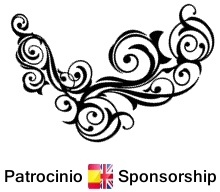
![]() La playa de Langre tiene dos vías de acceso. La primera vía está situada a la izquierda en el mapa, da entrada a la playa más pequeña de Langre, de las dos que componen el arenal. Es una zona ideal para el baño. El segundo acceso desemboca en la playa grande, que tiene unas condiciones especiales para practicar Surf.
La playa de Langre tiene dos vías de acceso. La primera vía está situada a la izquierda en el mapa, da entrada a la playa más pequeña de Langre, de las dos que componen el arenal. Es una zona ideal para el baño. El segundo acceso desemboca en la playa grande, que tiene unas condiciones especiales para practicar Surf.![]() The Langre beach has two access routes. The first route placed to the left in the map, leads to the smallest beach of Langre, one of the two beaches that are in the zone. It is an ideal area for swimming. The second way ends in the big beach. This beach has ideal conditions to Surfing.
The Langre beach has two access routes. The first route placed to the left in the map, leads to the smallest beach of Langre, one of the two beaches that are in the zone. It is an ideal area for swimming. The second way ends in the big beach. This beach has ideal conditions to Surfing. Acceso/Beach Access
Acceso/Beach Access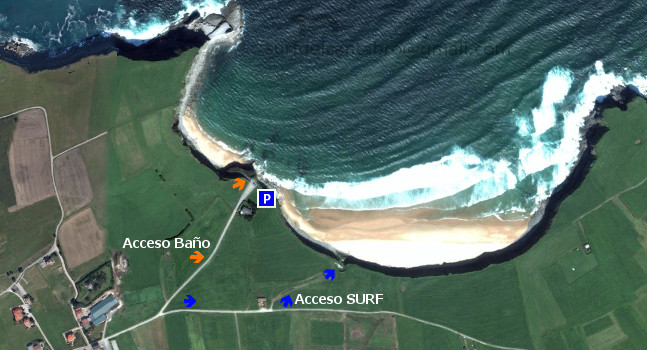
![]()

